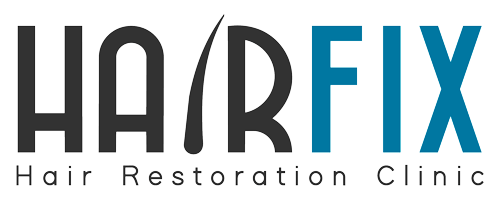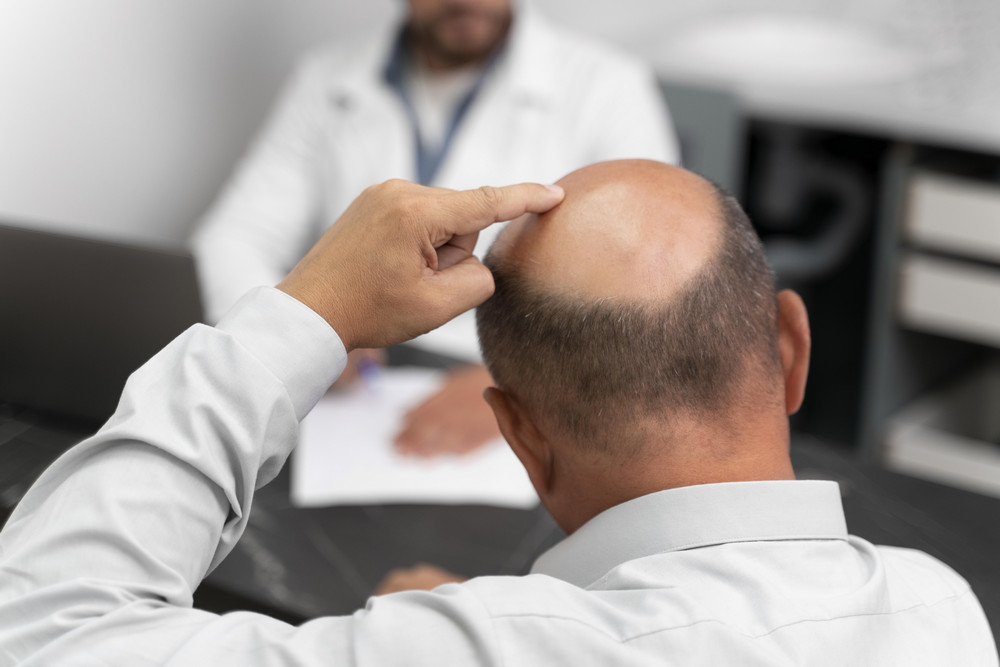Have you been thinking about getting a hair transplant but feel like you don’t have enough hair in the donor area? We have great news for you! Keep reading to find out whether a hair transplant is possible with a limited donor area.
Tabla de Contenidos
🧠 But first… what is a poor donor area?
When we talk about a hair transplant, the donor area is a crucial part of the scalp because this is where we harvest the hair follicles for the grafts. At Hairfix, we usually take them from the back and sides of the head since these areas are more resistant to the hormone dihydrotestosterone (DHT), the main cause of hair loss in both male and female pattern baldness, also known as androgenetic alopecia.
The quality and quantity of hair in the donor area are key to a successful transplant, especially if you want to cover a large area. If there isn’t enough hair or the density isn’t ideal, we consider this a poor or limited donor area.
📋 Characteristics of a poor donor area
| Characteristic | Details |
|---|---|
| Low hair density | Adequate density is about 0.5 follicular units per square millimeter. Having a lower density means extractions can be visible or we might not get enough follicles for the transplant. In a typical transplant, we extract between 1,500 and 4,000 follicles, or around 40 to 60 follicular units. |
| Thin or weak hair | Even if the density is acceptable, if the hair is too fine or lacks the strength needed, the final result might not be satisfactory. |
| Few hairs per unit | Normally, a follicular unit has one to four hairs, but in a poor donor area it might only have one or two. In that case, more units are needed to achieve the same density. |
| Damage from procedures | If you’ve already had a hair transplant and too many follicles were extracted, your donor area might be limited due to scarring or overharvesting. At Hairfix, we carefully evaluate the donor area to avoid overharvesting and to ensure patients can return for a second transplant if needed |
| Alopecia | Not all alopecias are the same. Some lead to permanent hair loss because of fibrous tissue formation (cicatricial alopecia). In other cases, round or oval patches appear due to an autoimmune disease (alopecia areata). |
| Medications | Medications like blood thinners, antidepressants, anticonvulsants, or chemotherapy drugs can cause hair density loss or hair shedding as a side effect. In those cases, the donor area might be too damaged to be suitable for a transplant. |
💡 So, what can be done?
Many patients come to my office with this question: “If I have little hair in the donor area, does that mean I can’t get a transplant?” I explain these alternatives to them:
🔄 Recovering the donor area
My patients always ask if the hair in the donor area grows back. The answer is no, because the follicle is extracted and does not regenerate. However, at Hairfix we work to perform strategic extractions so the donor area doesn’t look like a patch of bare skin.
Additionally, I recommend mesotherapy treatment to help the transplanted hair grow and to improve the quality of the existing hair. This helps ensure the donor area doesn’t look sparse or weak and can be reused if the patient returns for another transplant.
🧔 Body hair transplant
Generally, using body hair is not my first choice because it has different characteristics from scalp hair. However, when the scalp donor area is insufficient, this can be an innovative and viable solution for some patients.
In my experience, the most suitable option is beard hair transplantation because beard hair is the most similar to scalp hair in thickness and appearance.
However, keep in mind that the hair growth cycle is different for the beard, scalp, and other body areas. The growth phase of scalp hair (anagen) can last up to seven years, which allows for very long hair.
By contrast, body hair has a growth phase of about four months. This means that transplanted beard or body hair will always remain short and have different characteristics. Body hair transplants are mainly recommended for restoring the hairline, the crown, or for increasing density in specific areas—only when the donor area is truly very limited.
At Hairfix, we carefully analyze the characteristics of body hair to calculate the survival rate of the graft and ensure that this personalized solution aligns with your expectations, achieving natural and satisfying results.
🚫 Can I get a hair transplant with an external donor?
This is another common question in my practice. Many patients think they can get a hair transplant from their parents, children, or siblings, but the reality is that it’s not ideal because the immune system would reject it.
📅 Book your appointment and receive a personalized assessment
As you can see, having a poor donor area doesn’t mean you’re out of options. As a specialist, I understand that every case is unique and should be analyzed individually to determine the best strategy. My commitment, and that of the entire Hairfix team, is to offer you innovative and personalized solutions that help you restore your hair with natural, long-lasting results.
📞 Don’t let donor concerns about your donor area hold you back. Let us evaluate your situation and design the ideal plan for you. Book your appointment today for a personalized assessment and take the first step toward the hair you want.





